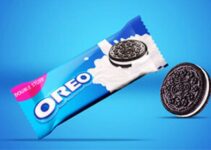Nestle is a Swiss food and drink processing multinational conglomerate corporation. Henri Nestle founded the food and drink processing brand in 1866. Today, we’ll discuss the Ansoff matrix of Nestle; four growth matrix strategy quadrants; market penetration, market development, product development, and diversification of the Ansoff matrix company example.
Elements of Market Penetration Strategy of Nestle
- Follows the customer-focused strategy of satisfying the needs and demands of customers
- Innovating in its offers and adapting to the latest trends
- Building and developing an emotional connection with the customers through storytelling
- Highly corporate social responsible brand with having a strong commitment to social and environmental sustainability
- Utilizin digital and social media platforms to connect and engage with the online custoemrs
- Social media influencer marketing to approach the new segments of the customer market
Top Selling Markets and Geographical Regions of Nestle – in billion CHF
- Switzerland – 1.11
- Chile – 1.31
- Australia – 1.45
- India – 1.99
- Germany – 2.21
- Canada – 2.52
- Philippines – 2.68
- UK – 3.53
- France – 3.55
- Mexico – 3.94
- Brazil – 4.13
- China – 5.52
- USA – 32.55
Latest and Best Selling Collection of Nestle
- Nestum
- Purina
- Carnation
- Nestle UHT Milk
- NesCafe
- KLIM
- Milo
- Orchard Juices
- Maggi
- Beverages – 25.22 billion CHF
- Health science and nutrition – 15.68 billion CHF
- Nestle Water – 3.5 billion CHF
The Ansoff Matrix of Nestle would focus on the four growth matrix strategy quadrants; market penetration, market development, product development, and diversification. Here’s the Nestle Ansoff matrix company example as follows;
Ansoff Matrix of Nestle
Let’s discuss the four growth matrix strategy quadrants in the Ansoff matrix of Nestle as an Ansoff matrix business example; they’re as follows;
Market Penetration Strategy of Nestle
The market penetration quadrant in the Nestle Ansoff matrix business example as a growth matrix strategy has the lowest risk. It is because here the food and drink brand sells its current products and services in the existing customer market. However, the food and drink market is growing, and the market penetration growth strategy is possible.
I-Aggressive Marketing
Nestle runs aggressive marketing and advertisement campaigns for the promotion of its existing food and drink products and services in the existing customer market. It helps the company to penetrate the market with its existing portfolio.
II-Different Sizes & Packaging
Nestle offers food and drink products in various types of sizes and packaging to target various segments of the current customer market. Some people can’t afford the large packaging; they would buy the small size packaging products.
III-Acquisition
Nestle acquires small competitors from the market, and it allows the food and drink brand to decrease the competition from the existing and penetrate the market.
IV-Baby Food
Baby food is the main segment of the food and drink brand Nestle. In order to increase the sale of baby food items, the company puts emphasis on the point that its products would make the baby healthy and grow quickly.
V-Discounts
Offering price discounts is one of the main promotional campaigns of the company and it helps the company to attract the attention of customers and penetrate the market.
Market Development Strategy of Nestle
The market development quadrant in the Nestle Ansoff matrix business example as the growth matrix strategy has a bit higher risk than the market penetration strategy. It is because here you expand your food and drink market and offer your current product portfolio in the new market. However, you don’t know the culture and response of the new market; that’s what makes it riskier.
I-Market Expansion
Nestle keeps on expanding its geographical market as a part of its global market expansion plan. In order to enter the new market, the food and drink brand employs the following types of strategies and approaches;
- Making its product affordable to the new customer market
- Running marketing and advertisement campaigns in the newer market
- Employing various distribution channels
II-Product Variations
In order to increase the new market acceptance rate, Nestle launched various types of product variants for different customer markets. For instance, many breakfast cereal variants are available in the US market, and you won’t find them in the Asian market. Similarly, instant Maggi noodles product variants are available in the Indian market, but they aren’t available in the US market.
Product Development Strategy of Nestle
The product development quadrant in the Nestle Ansoff matrix business example as the growth matrix strategy has a higher risk than the market penetration strategy. It is because here you launch a new product service or food or drink in the existing customer market. You would have to run new marketing and promotional campaigns for the new product and it makes it riskier.
I-Product Expansion
Ever since its foundation and becoming a conglomerate corporation, Nestle has been introducing new products in the existing customer markets. While launching any new food or drink product in the market, the company keeps its price low to increase the market acceptance rate.
The food and drink brand also receive customer feedback to make adjustment to its existing products; or launch new product variants. It allows the company to connect with customers and satisfy their demands and wishes. While improving the product, the company also adjusts its pricing and profit margin.
- Ice cream in Snickers and Mars flavors attracted significant success
- Snickers and Mars are the chocolate products of Nestle
- New flavor type of beverages
- Product variations in the baby food and breakfast cereal product category
Diversification Strategy of Nestle
The diversification quadrant in the Nestle Ansoff matrix business example as a growth matrix strategy is a riskier strategy than all three previous growth strategies. It is because here you launch a new product or service in the new customer market. You won’t know how your new market will react to the new soft drink beverage.
I-Horizontal & Vertical Diversification
Nestle has been diversifying its products and market for many times over the years. There are various new product examples that Nestle successfully launched in the new markets. Some of them are as follows;
- Gillette Shaving Foam and various other shaving products for men’s grooming
- Baby Food and Formula One for infants and various other baby items
Conclusion: Nestle Ansoff Matrix Company Example Growth Matrix Strategy
After an in-depth study of the Ansoff matrix of Nestle; we have realized that Nestle is the world’s leading food and drink multinational conglomerate corporation. If you are learning about the Nestle Ansoff matrix business example; then you should keep in mind the abovementioned four growth matrix strategy quadrants; market penetration, market development, product development, and diversification.

Ahsan is an accomplished researcher and has a deep insight in worldly life affairs. He goes Live 3 days a week on various social media platforms. Other than research writing, he’s a very interesting person.


